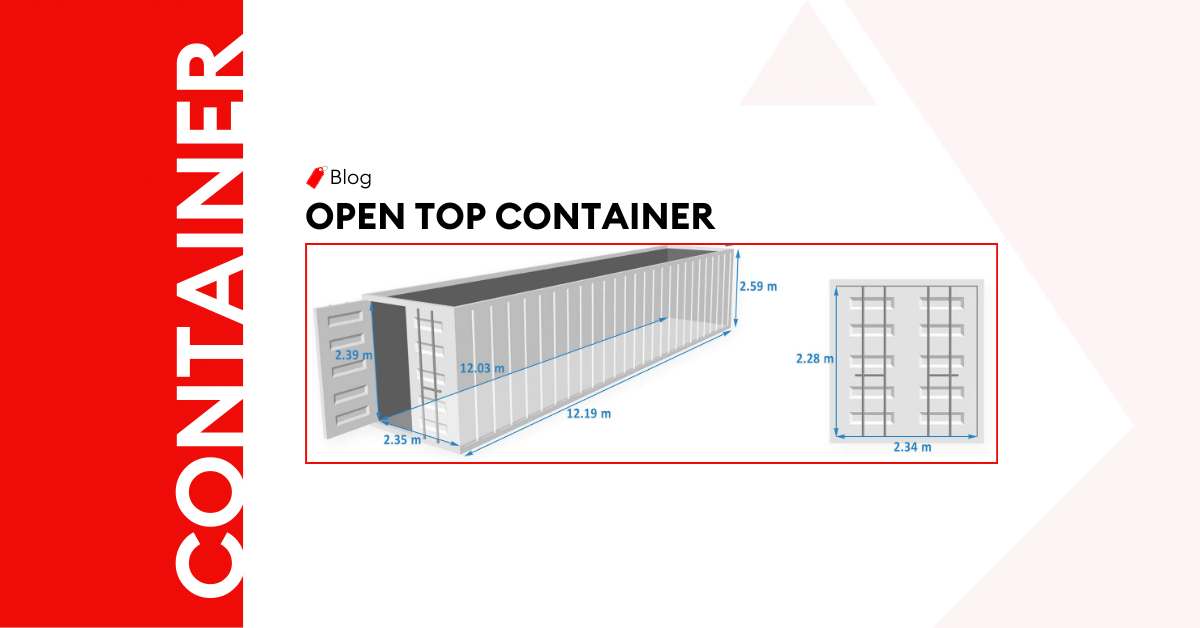
Open Top Container – An in-depth guide
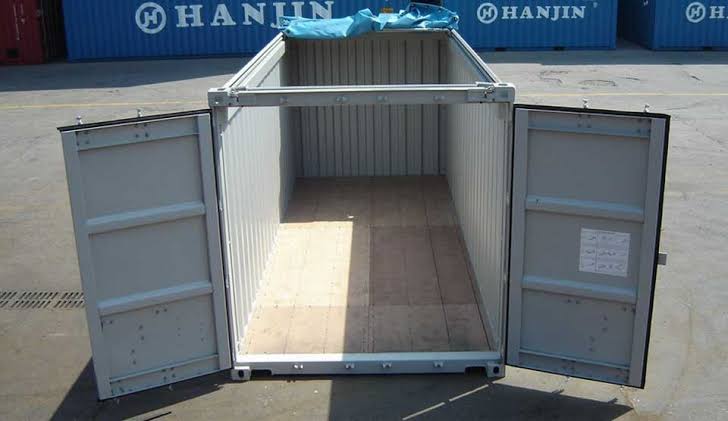
Introduction
With the UAE’s bustling trade and diverse cargo demands, efficient logistics is essential to streamline operations and maximize efficiency. Open top shipping containers are invaluable, from accommodating oversized freight to providing unrivaled loading convenience.
Whether you’re a seasoned logistics veteran or an entrepreneur venturing into the shipping world, the relevance of open top containers is undeniable. In this article, we discuss this unique cargo transport solution in detail.
What is an Open Top Container?
Definition and Purpose of Open Top Container
Open top shipping containers are specialized cargo-hauling units designed without a fixed roof. Instead, they feature a removable tarpaulin or hard top cover and are typically constructed with durable steel frames.
Differentiating Open Top Container from Other Container Types
Hardtop and soft top open-top shipping containers stand out from other types of standard shipping containers due to an open roof design that can be covered with a removable tarpaulin or hard top. So, there’s efficient loading and unloading of oversized, heavy, or awkwardly shaped cargo from the top, instead of horizontally through the doors.
Key Features and Components of Open Top Container
Some of the key features include
- Open roof design
- Removable cover (tarpaulin) or hard top cover
- Corner fittings and lashing rings
- Steel construction
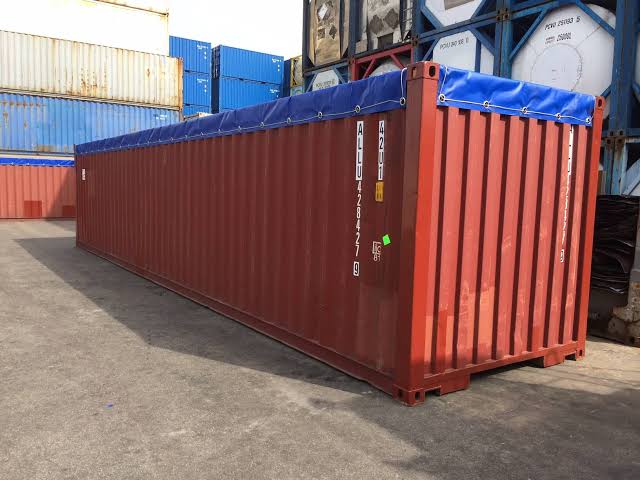
The Benefits of Using an Open Top Container
Using open top container to manage your cargo comes with the following benefits:
Versatile Loading and Unloading
Unlike standard containers with fixed roofs and limited door sizes, goods can be loaded vertically from the top of open top containers using cranes or forklifts.
Ideal for Oversized Cargo
With their flexible roof design and removable top cover, open top containers provide ample vertical space, accommodating goods that surpass the height restrictions of standard containers.
Easy Access for Loading and Inspection
The absence of a fixed roof allows cargo to be loaded vertically from the top, simplifying the process with cranes or forklifts. Additionally, it grants effortless access to inspect and secure the cargo before sealing the container.
Efficient Loading of Bulk Materials
With the open roof design, bulk materials like grains, ores, and construction aggregates can easily fit into the container from the top. The absence of restrictive doors enables swift and cost-effective loading using conveyor systems or by directly tipping from trucks.
Suitable for Heavy Machinery and Equipment
Open top shipping containers enable hassle-free vertical loading and unloading, enabling cranes or forklifts to easily handle the substantial weight of machinery. The sturdy steel construction ensures the safe transport of heavy equipment over long distances.
Cost-Effective Transportation Solution
Open top hauling units eliminate the need for specialized and costly transportation. Vertical loading reduces labor and time costs, and the containers’ durability and reusability contribute to long-term cost savings.
Simplified Handling of Awkwardly Shaped Goods
The absence of a fixed roof and the open-top feature simplifies the handling of irregularly shaped cargo that might not fit through the standard doors of other container types. Cranes, forklifts, or other loading equipment make it effortless to load and secure items with unconventional dimensions.
Efficient Loading of Bulk Materials
With the open roof design, bulk materials like grains, ores, and construction aggregates can easily fit into the container from the top. The absence of restrictive doors enables swift and cost-effective loading using conveyor systems or by directly tipping from trucks.
Recyclable and Eco-Friendly Option
The construction of open top shipping containers incorporates durable steel, a material that’s recyclable at the end of its lifecycle, reducing the demand for new raw materials. Moreover, the containers can be repurposed for various applications, thereby minimizing waste and environmental impact.
Customizable Modifications for Specific Needs
From installing additional security features, ventilation systems, or reinforced flooring for heavy loads to creating specialized loading and unloading mechanisms, open tops accommodate diverse cargo types.
Enhanced Ventilation and Airflow for Perishable Goods
Open top containers with hard tops offer enhanced ventilation and airflow, as the open roof design allows natural air circulation and maintains optimal temperature and humidity levels within the container.
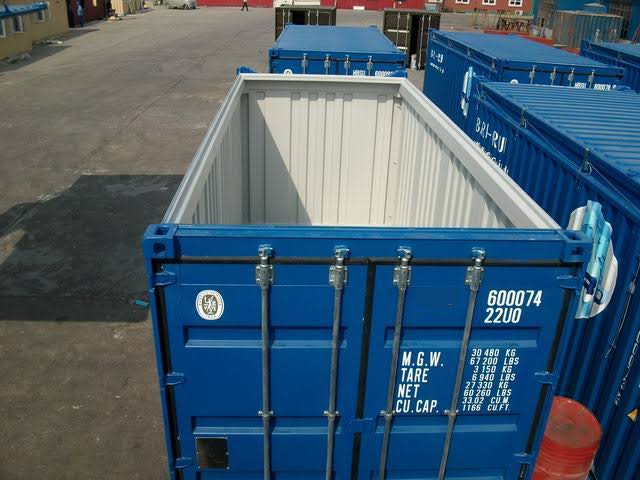
What are the Different Dimensions of Open Top Containers?
Overview of Standard Sizes: 20ft and 40ft Open Top Container
20ft and 40ft open container sizes are the most common ones with 8 feet width and 8.5 feet in height. The internal height may vary slightly depending on the container’s design, but it generally remains around 7.5 to 7.8 feet.
Internal and External Dimensions of Open Top Containers
The internal open top container dimensions are typically around 19 feet and 39 feet in length, 7.5 to 7.8 feet in width, and 7.5 to 7.8 feet in height.
Externally, the containers are approximately 20 feet and 40 feet in length, 8 feet in width, and 8.5 feet in height. These measurements may vary slightly depending on the specific manufacturer and design.
Load Capacity and Weight Restrictions
Standard 20ft open top container can typically carry a payload of up to 28,000 kg (62,000 lbs.), while 40′ open top container can hold around 30,000 kg (66,000 lbs).
Characteristics of Open Top Containers
Unique Design Features and Construction of Open Top Containers
- Open roof design featuring a removable tarpaulin or hard top cover
- Reinforced top frames to support heavy loads
- Corner fittings and lashing rings for secure cargo fastening.
- Sturdy and durable steel construction
- Versatile cargo transport
Flooring and Load Securing Mechanisms
Typically made of marine-grade plywood, the container flooring ensures stability and supports the weight of various items. Lashing rings and corner fittings on the interior walls and floor provide anchor points for fastening cargo with straps, ropes, or chains.
Structural Strength and Durability
Constructed from high-quality steel, open top containers withstand harsh conditions during sea voyages and overland transportation. Reinforced top frames and corner fittings support heavy machinery and specialized cargo.
The Most Common Applications of Open Top Containers
Overview of Industries and Cargo Types That Utilize Open Top Containers
Industries such as construction, mining, manufacturing, and oil and gas rely on open top containers to transport heavy machinery, equipment, and project-specific components. In the agricultural sector, they are useful in shipping bulk commodities like grains, seeds, and produce.
Examples of Specific Goods Transported Using Open Top Containers
- Excavators, bulldozers, and industrial equipment
- Steel beams, pipes, and pre-fabricated structures
- Buses, trucks, and tractors
- Timber
- Machinery parts
- Project-specific goods ,
Get In Touch
How Al Sharqi Can Help with Open Top Container Shipping
At Al Sharqi, we excel in providing comprehensive open top container solutions. With our expertise in handling specialized cargo and open top containers, your business can benefit from secure and efficient transportation services in the UAE.
Together with our partners, we have extensive network coverage for domestic and international shipping guaranteeing seamless connectivity to various destinations. Al Sharqi’s commitment to safety regulations and best practices ensures the protection of valuable cargo throughout the journey. With tailored logistics solutions, Al Sharqi caters to the unique requirements of open top container shipping, offering a reliable and customer-centric service.
Conclusion
Open top shipping containers have unique design features, benefits, and applications. Understanding their specifications is vital for shipping experts, enabling streamlined logistics and efficient handling of specialized goods.
Shippers can leverage this knowledge to enhance their logistics and ensure secure freight. Embrace open top container shipping to revolutionize your logistics strategies and gain a competitive business edge.
FAQs
Our experience in the field and our global network
An open top container is a shipping container with an open roof, allowing for easy vertical loading and unloading of oversized or heavy cargo. Unlike standard containers, it lacks a fixed roof and typically features a removable tarpaulin or hard top cover for cargo protection.
Common types of cargo that are oversized, heavy, or irregularly shaped. Industries commonly use these containers for transporting heavy machinery and equipment, large construction materials, vehicles, and bulk commodities.
Lashing rings and corner fittings on the container’s interior walls and floor provide anchor points for fastening cargo with straps, ropes, or chains.
Generally, standard 20-foot open top containers have a payload capacity of around 28,000 kg (62,000 lbs), while 40-foot open top containers can carry approximately 30,000 kg (66,000 lbs).
Yes, open top containers accommodate various cargo types and are suitable for global trade applications.
Related Articles
Who Is Responsible for Demurrage Charges?
When it comes to shipping, people dealing in the trade at times may get charged with unexpected bill
What Is the Difference Between Detention and Demurrage?
Every step in the logistics operations is carried out according to proper agreements and contracts.
The Ultimate Guide to Dry Container {Types, Dimensions & Specifications}
Introduction In the vast ocean of international trade, about 90 percent of cargo transport relies on





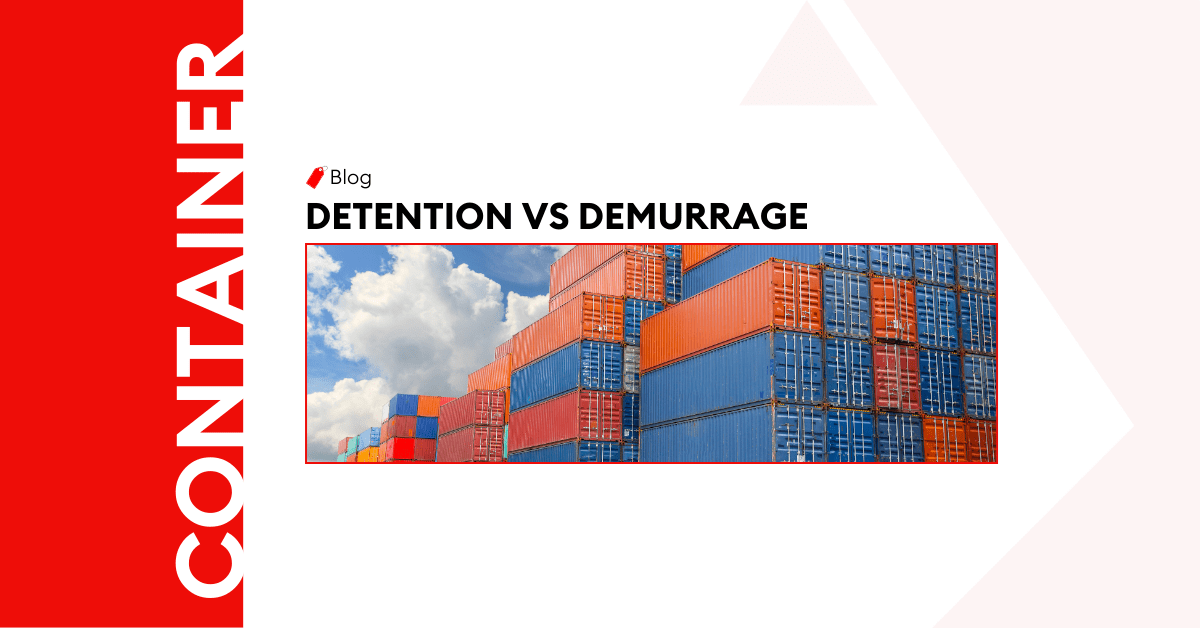
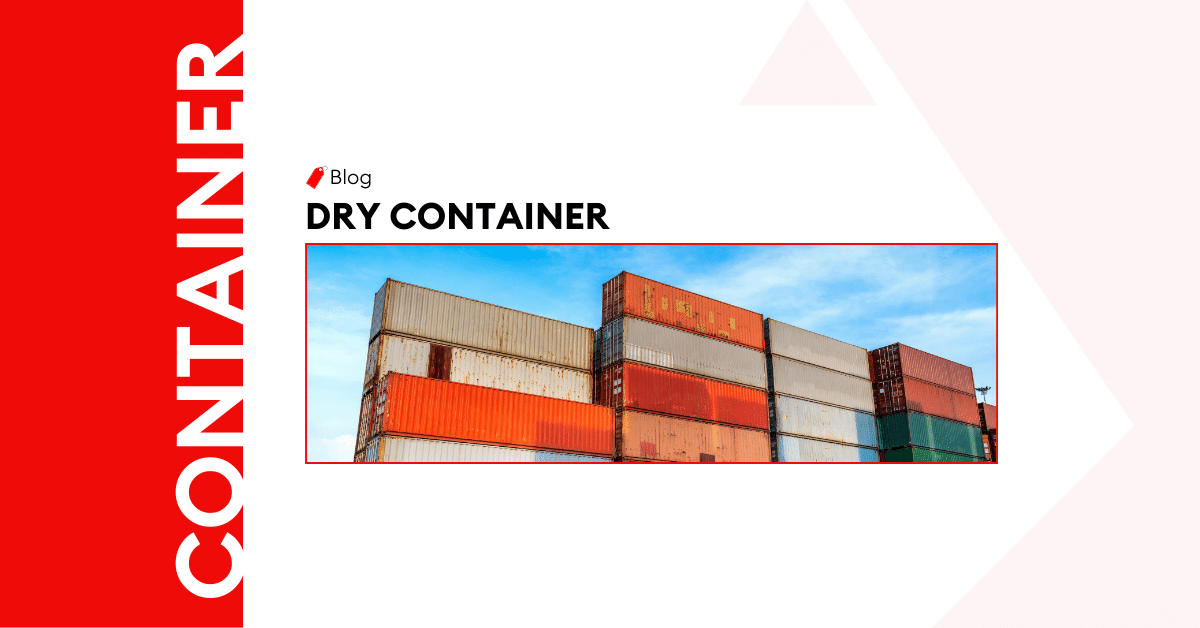
Post a comment
You must be logged in to post a comment.